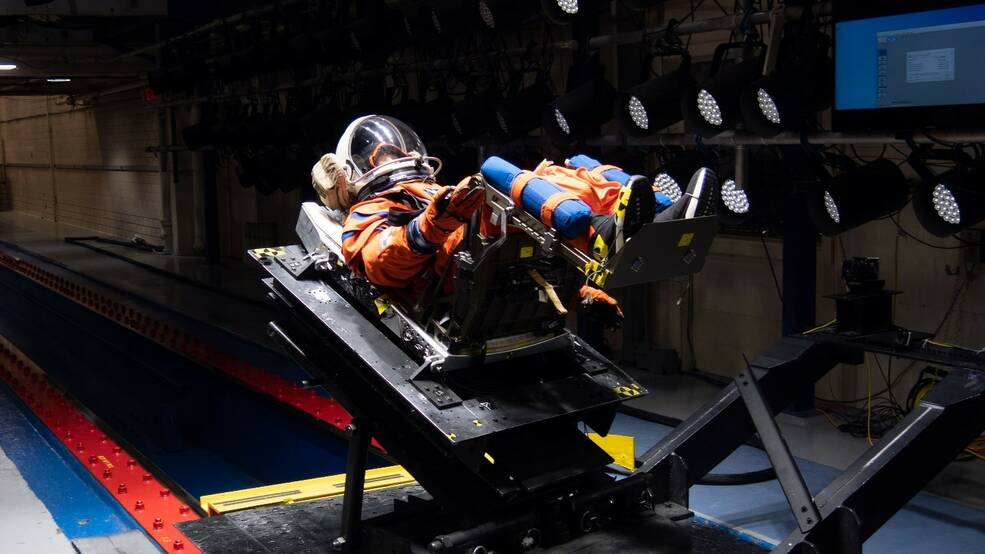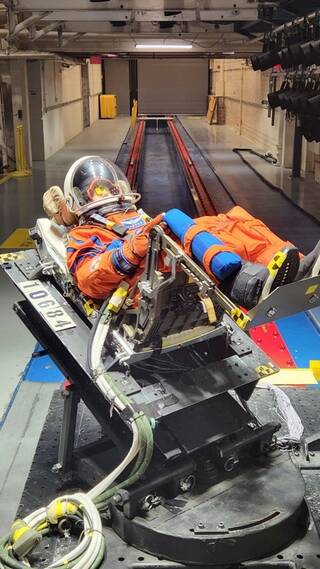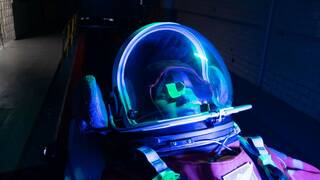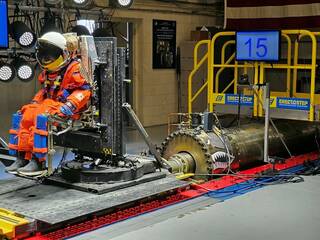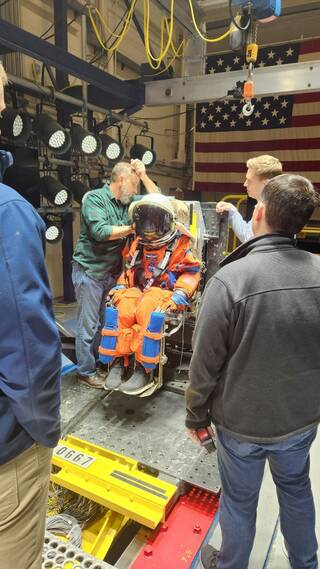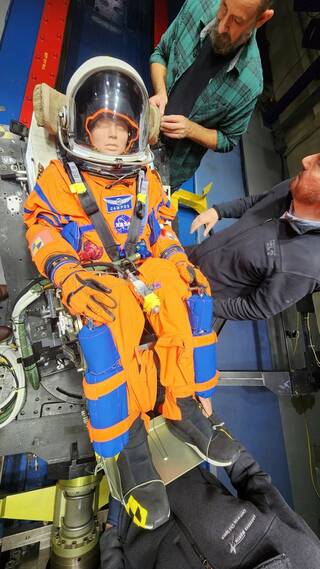NASA’s Commander Moonikin Campos, a manikin that flew on the Artemis I flight test beyond the Moon wearing the OCSS (Orion Crew Survival System) spacesuit, is continuing its journey of exploration on Earth through a unique series of testing as a crash test dummy.
NASA’s Commander Moonikin Campos, a manikin that flew on the Artemis I flight test beyond the Moon wearing the OCSS (Orion Crew Survival System) spacesuit, is continuing its journey of exploration on Earth through a unique series of testing as a crash test dummy. The tests are informing engineers’ understanding of what the experience of flying inside the agency’s Orion spacecraft will be like on crewed missions to the Moon beginning with Artemis II.
The OCSS suit will be worn by Artemis astronauts during the most dynamic phases of spaceflight: launch and re-entry through Earth’s atmosphere and landing. On Artemis I, Moonikin Campos’ seat was also equipped with sensors to record acceleration and vibration throughout the mission.
Now back on Earth, the manikin’s latest stop was at Wright-Patterson Air Force Base in Ohio, where engineers put him through acceleration sled testing to simulate contingency landings. Sled testing is a common method of testing restraint systems like automotive seats and seat belts to investigate their performance in collision situations.
Moonikin Campos was named after NASA engineer Arturo Campos, who was instrumental in returning the Apollo 13 crew safely to Earth.
NASA teams worked alongside U.S. Air Force experts to better understand how the OCSS suit and Orion seat performed in extreme acceleration movements astronauts could experience during launch and in space. These findings will help improve suit, helmet, and seat design for future Artemis missions.
“With this test, Commander Moonikin Campos has continued his service to the crew, to ensure their safe return home, very much fitting with the legacy of his namesake,” said Dustin Gohmert, OCSS project manager at NASA’s Johnson Space Center in Houston.
The sled system at Wright-Patterson is hundreds of feet long and made of steel and concrete. An Orion spacecraft seat was mounted to the sled device and launched Moonikin Campos with accelerations up to 19g, 19 times a normal gravity force. A series of lights enabled engineers to clearly record and observe the impact on the manikin during the initial moments of acceleration using cameras that record at 1,000 frames per second.
Stickers with a four-quadrant, yellow and black design were placed on and around the manikin as reference points to serve as markers that enable easier tracking of movement in slow motion replays of the test. NASA engineers will continue to study the tests to inform decisions on improving safety and comfort for astronauts on Artemis missions.
Moonikin Campos’ next stop will be to NASA’s Kennedy Space Center in Florida to support the acceptance vibration testing of the Artemis II Orion crew module. The manikin, which will be inside Orion during the testing, will validate the spacecraft can vibrate at safe and comfortable limits for astronauts during dynamic phases of Artemis II.
The approximately 10-day Artemis II flight will test NASA’s foundational human deep space exploration capabilities, the Space Launch System rocket and Orion spacecraft, for the first time with astronauts and will pave the way for lunar surface missions, including landing the first woman and first person of color on the Moon.
By Rebecca Wickes, NASA Johnson Space Center
rebecca.c.wickes@nasa.gov


























